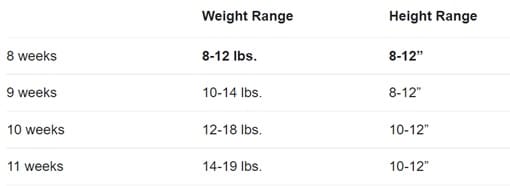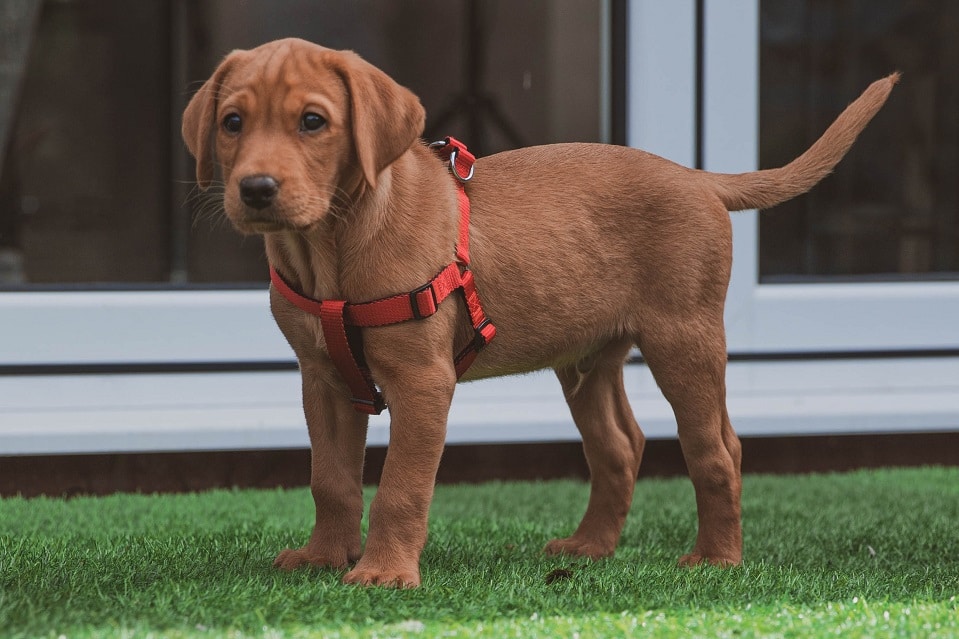Do I need to put a harness on my Lab puppy?
It’s no secret that Labrador Retrievers are one of the most spirited breeds of dogs out there. They demand the best food and the most attentive care. As a result, many people believe that you should use a harness rather than a collar on your lab because of how much they tend to pull. Using a leash and collar can help reduce the amount of pulling, but it can be not easy to maintain a firm grip on the leash while walking. UndersLabrador will not injure himself while pulling the leadtand What Size Harness for Lab Puppy is best.
A dog harness is also an option. This is the better option for safety, comfort, and training for your Labrador. In addition, it’ll be priceless for your sense of security.
A comfortable Labrador harness is an important consideration when shopping for one. A good rule of thumb is that the harness should be snug but not squeezing the wearer. In addition, you’ll be relying on the harness regularly. As a result, choosing a durable option is critical. For your dog, the features of a Lab harness are more important than the aesthetics. However, if you want to give your dog a dash of color, you can go with a bright harness.
A harness is preferable to a collar for a Lab puppy because it is more secure and gives the owner greater control. In contrast to a collar, a harness evenly distributes pressure across the dog’s upper body, reducing strain.
The ability to lead and control your dog is essential no matter what kind of dog you already have at home, whether a new Labrador puppy or an older dog who has been following you around the house waiting for a walk. You don’t want to use a method of restraint that is painful or inadvertently harmful to him, so this is the most crucial consideration.
Advantages of a harness
Injuries Can Be Prevented with A Dog Harness.
To avoid hurting your Labrador, use a harness that distributes the pressure across his upper body instead of his neck. More importantly, your Labrador will not injure himself while pulling the lead. To keep walking your dog from becoming a chore, you must still teach your dog not to pull on the leash.
Enhanced Error Space
Keep a close eye on your Labrador puppy’s growth so that the collar doesn’t choke him. If your dog grows out of a harness, at least it won’t put its neck under any unnecessary strain. Your puppy’s harness outgrows more quickly than your dog’s collar, making it more noticeable when he does so.
Control Without Cruelty
The final drawback of dog collars has reversed. If all else fails, you can use brute force to restrain your dog without causing him undue harm. When your Labrador attempts to flee, it is cruel to force him to wear a collar. Note that dogs give in more quickly when their collar is tugged than when they hold back a harness. As a collar forces a submission, ease is incompatible with kindness in this instance.
What is the proper Harness size for a Labrador Retriever?
Due to puppies’ rapid growth, your Lab’s baby collar will only fit for a short period. To properly fit your puppy, you’ll need to buy a collar at least 9 inches long.
When Is the Right Time to Harness a Puppy?
It would help if you got your dog used to wearing a harness as soon as possible. It’s a mistake to hold off until you have a lead in introducing. To make your puppy used to the harness, you don’t need to use any lead discipline at all in the beginning. The answer to the question “when can you get a puppy?” is the same as “when can you put a harness on a puppy?”
What size harness for an 8-week lab puppy
An 8-week-old puppy can wear a harness, but you’ll need to make sure it’s not too heavy or uncomfortable for your dog. Ensure the harness doesn’t have large loops that could stuck your pet on furniture while he grows.

What is the recommended harness size for my Lab puppy?
It’s essential to keep in mind that every puppy is unique when determining the proper harness size for your lab puppy. It’s a good idea to measure your puppy’s girth because some puppies are healthier than others.
Remember to compare your measurements to each harness’s size specifications once you have them. A harness with adjustable straps is preferable because it will last longer when your dog goes through a growth spurt.
Dogs’ response??
While this is not for everyone, some dog owners find it extremely convenient to have their dog’s name written out in large letters on the collar. On the other hand, others believe that this is a risky move. There used to be a fear among dog owners that their pet would be an easy mark for thieves if they knew his name. Many dogs are also microchipped, which makes proving ownership much easier, but most dogs are supervised while outside.
Even if your dog is amiable, having his name on his collar is unlikely to put him at risk.
Conclusions
Collars do serve a purpose in the lives of Labradors, but it is a means of identification, not as a fashion statement. When lab puppies get excited, they may pull on their leashes excessively. Such instinctive actions will be punished by choking, immediate pressure on the neck, or even nerve damage if a collar is attached to the animal’s body. Regardless of the benefits a collar might provide, this isn’t acceptable.
Your Labrador must be trained to wear the harness before you can use it safely – you must do this as soon as possible when he is a puppy so that you can control him more effectively.







